Power Generation at Kelp and Oyster Farms from Low Velocity Currents
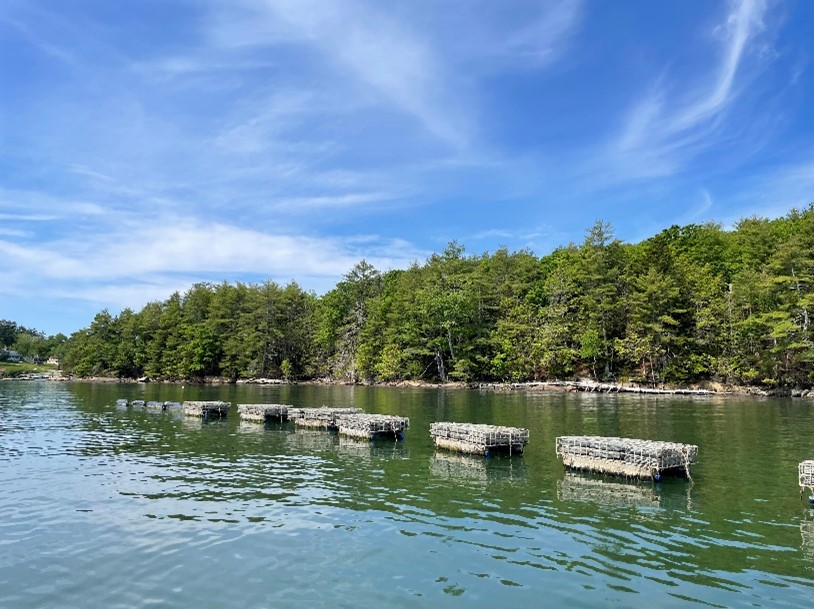
Seaweed and oyster farms are often located in nearshore locations with current speeds between 0.2 and 0.5 m/s, which is too slow for turbines to harvest the energy from flowing water. However, farmers have interest in utilizing clean energy from the flowing water at or near their sites to power facilities and equipment.
This project explores the feasibility of using new current energy conversion technologies to generate electricity for aquaculture farms. The feasibility will be evaluated by characterizing the current speed conditions at four farms, field testing a VIVACE current energy converter to measure its electricity production, and conducting power usage surveys at the four farms.
Project Goals
This project has four primary components:
- Characterize the current speed conditions at four aquaculture farms in different parts of the United States.
- Survey the power usage at the four farms to describe the power needs of each type of equipment and the daily and seasonal usage patterns.
- Field test a new current energy conversion device to quantify its power production.
- Conduct outreach activities to communicate how marine energy could be used at aquaculture farms.
Measuring Currents
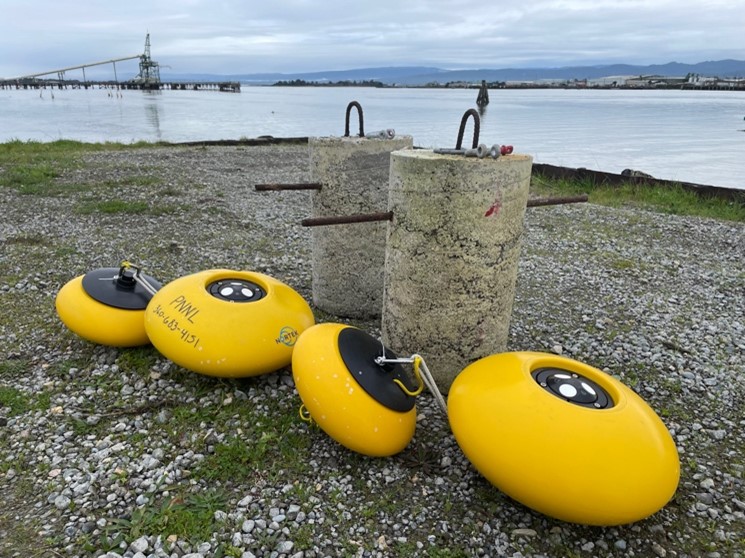
Information on predicted current speeds is available at a broad scale across the United States from models from the Marine Energy Atlas, but the models often do not cover the nearshore locations that kelp and oyster farms occupy. Experimental data need to be collected onsite to be able to validate the model information and understand the actual current speeds at varying depths across the tidal cycle.
To measure the current speeds, our team deploys an acoustic doppler current profiler (ADCP). This device is dropped off the side of a boat or dock with an anchor at the desired location to sink to the bottom. It records the current speeds at multiple water depths, then floats back to surface when the sample period is complete and the team is ready to collect it. This can be repeated at multiple locations at a single farm to determine the best site for a marine energy device.
Check out the image gallery below to see more about what this research looks like in action at multiple shellfish aquaculture farms.
What’s Next
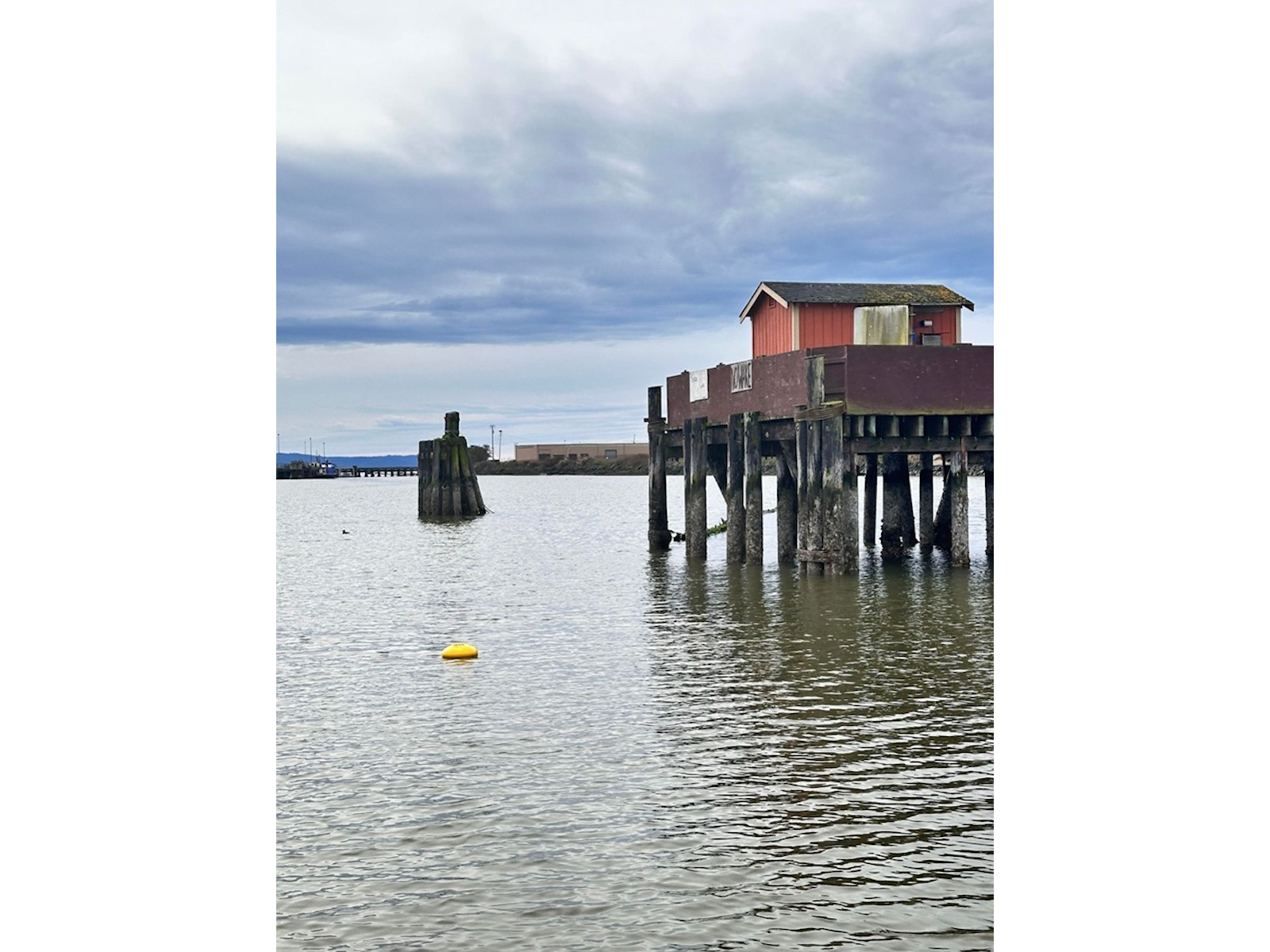
On-site currents have been measured in partnership with two oyster farms: Hog Island Oyster Company in Humboldt Bay, California, and Ferda Farms in Brunswick, Maine. Researchers are currently measuring current speeds at Taylor Shellfish Farms in Puget Sound, Washington, and the University of New Hampshire’s Aquafort. Once complete, the current profiles will be analyzed for compatibility and potential deployment of the VIVACE device at a farm to continue testing to determine the possibilities of using marine energy to power aquaculture operations.
Interested in seeing how marine energy could support your aquaculture operations, or have a different device that you’d like to see at an aquaculture farm? Reach out to Ruth Branch to explore partnerships for future research.
Educational Outreach and Materials
Scientists at Pacific Northwest National Laboratory have conducted several outreach events at schools and developed curriculum materials for elementary age students to learn about aquaculture and marine energy.
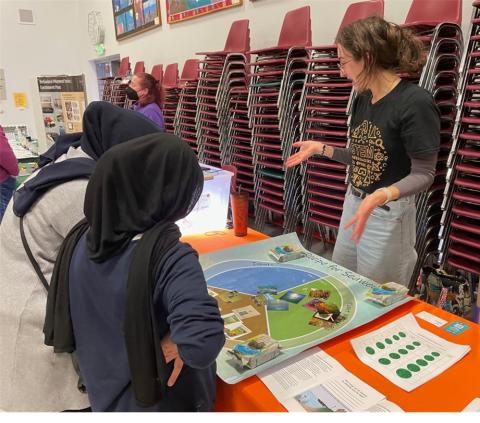
Educational Resources
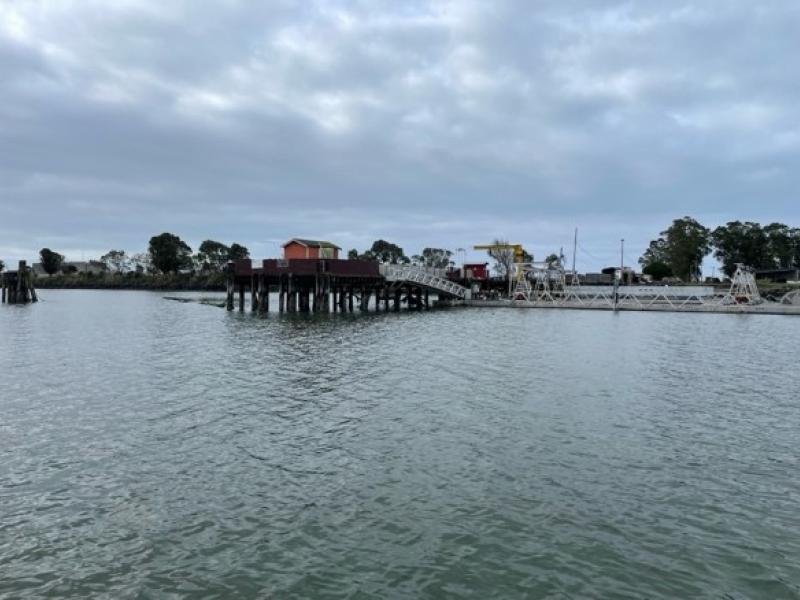
View of Hog Island Oyster Farm from the water
(Photo by Candace Briggs | Pacific Northwest National Laboratory)
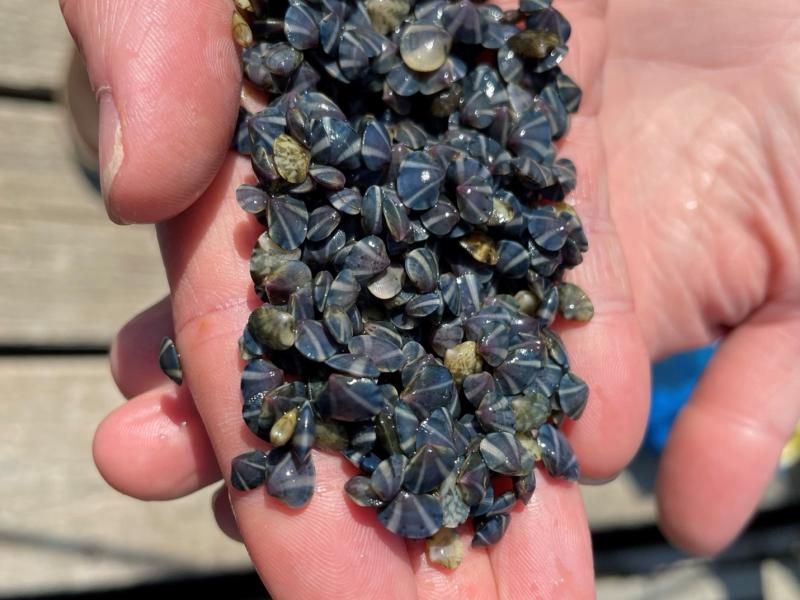
Clam seed grown at Taylor Shellfish
(Photo by Ruth Branch | Pacific Northwest National Laboratory)
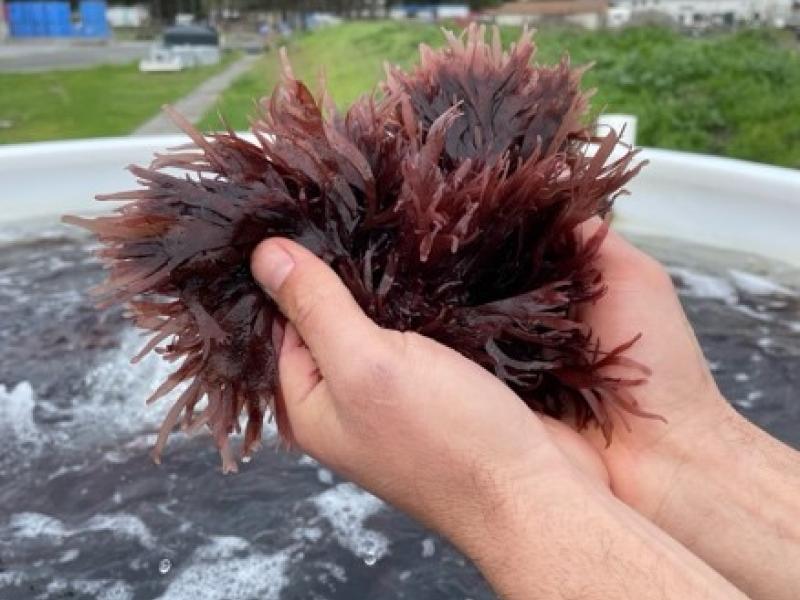
Dulse grown in tanks onshore at Hog Island Oyster Company by Sunken Seaweed
(Photo by Ruth Branch | Pacific Northwest National Laboratory)
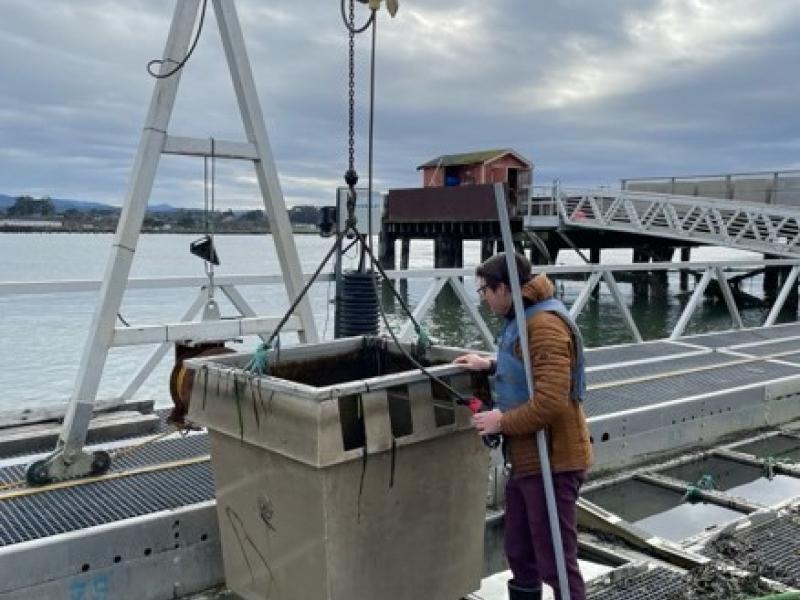
Checking on oysters from a bin in the Floating Upwelling System (FLUPSY) nursery at Hog Island
(Photo by Ruth Branch | Pacific Northwest National Laboratory)
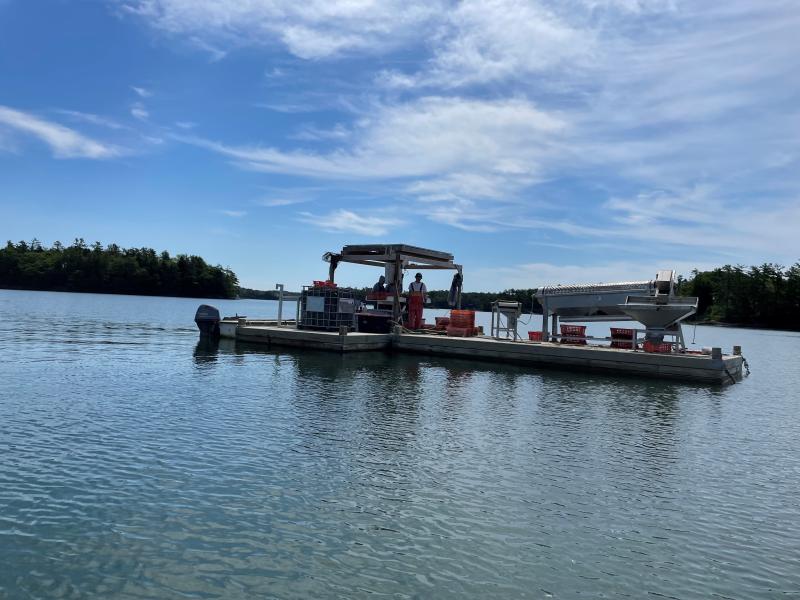
Solar powered floating work platform at Ferda Farms
(Photo by Ruth Branch | Pacific Northwest National Laboratory)
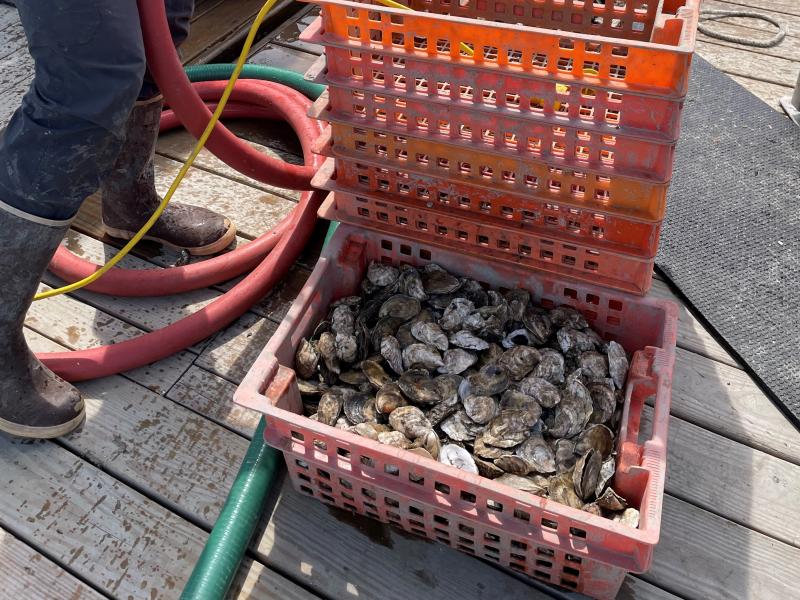
Harvested and sorted oysters at Ferda Farms
(Photo by Ruth Branch | Pacific Northwest National Laboratory)
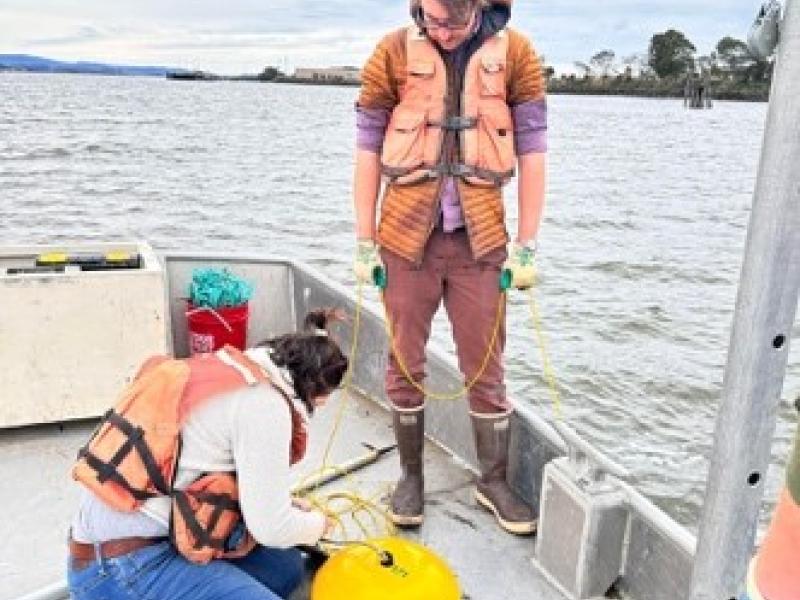
Retrieval of ADCP float at Hog Island
(Photo by Candace Briggs | Pacific Northwest National Laboratory)
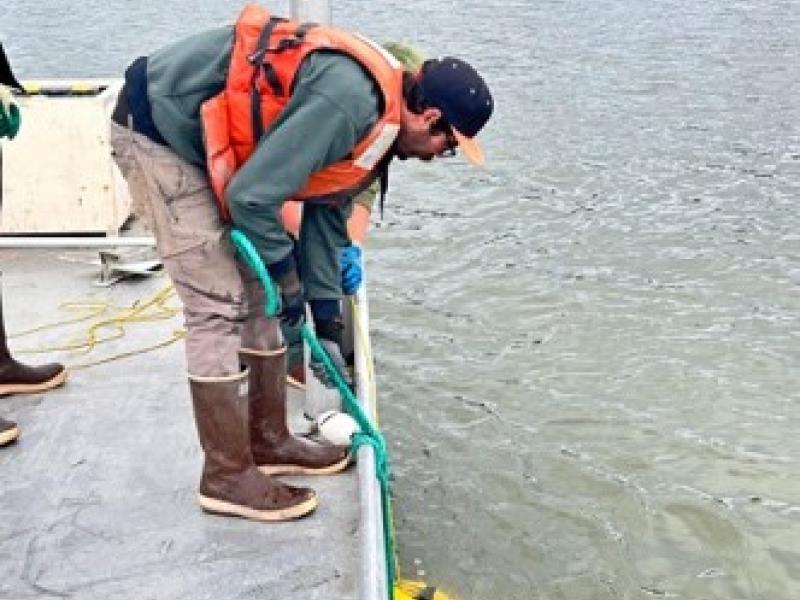
Retrieval of ADCP and anchor at Hog Island
(Photo by Candace Briggs | Pacific Northwest National Laboratory)